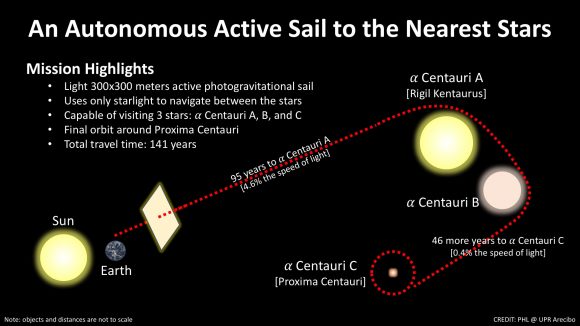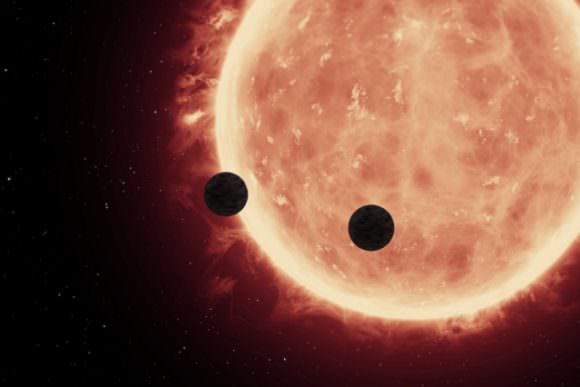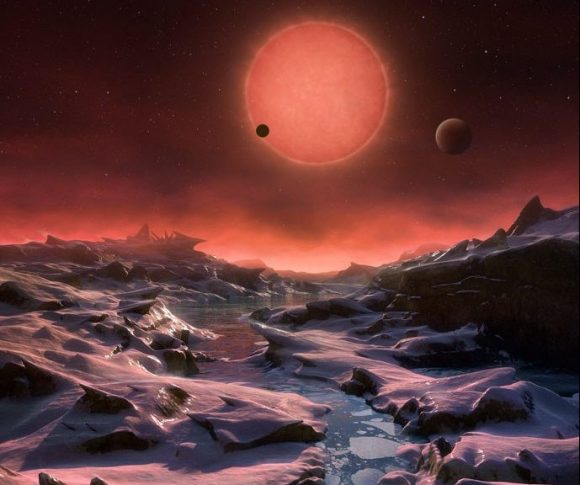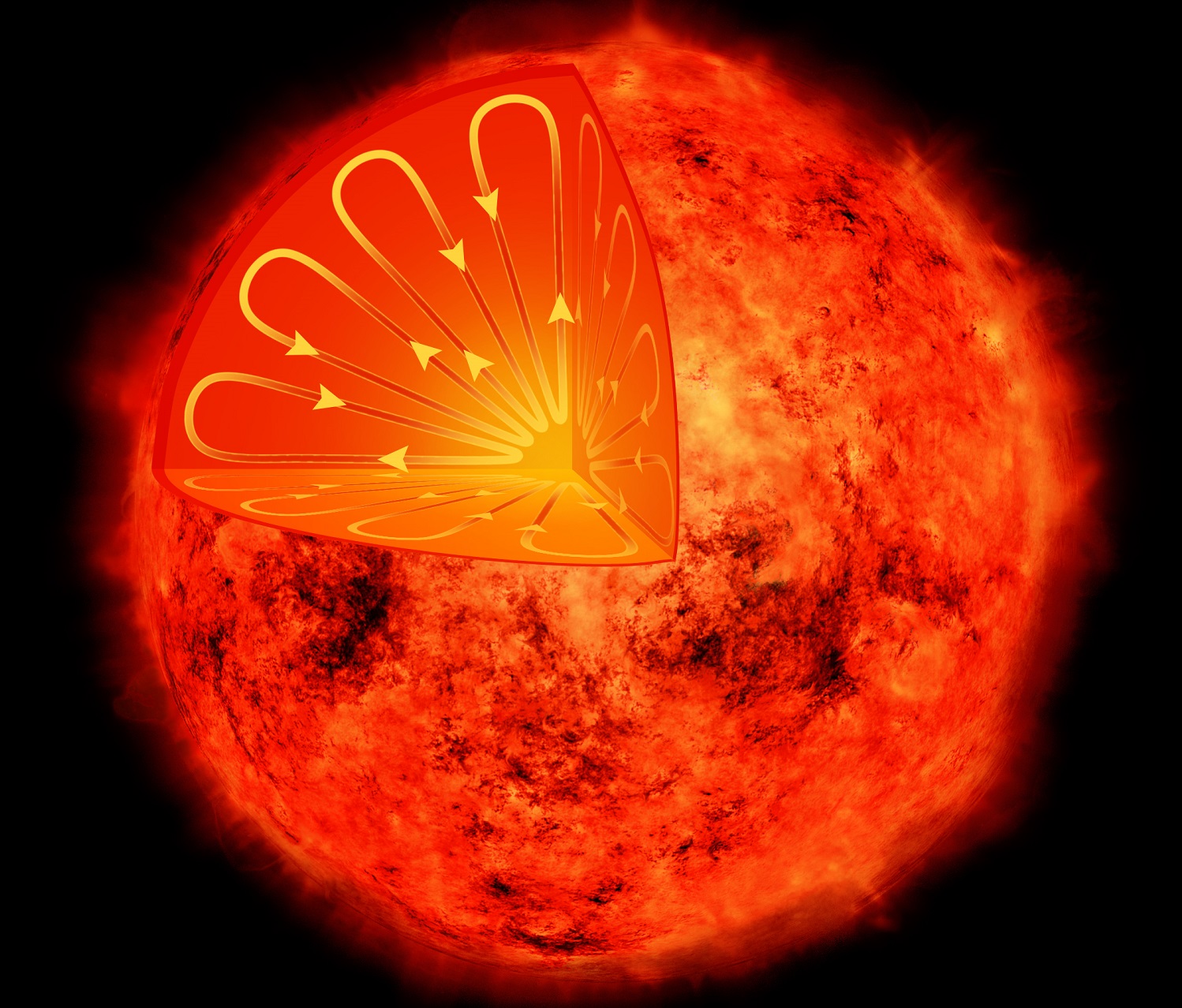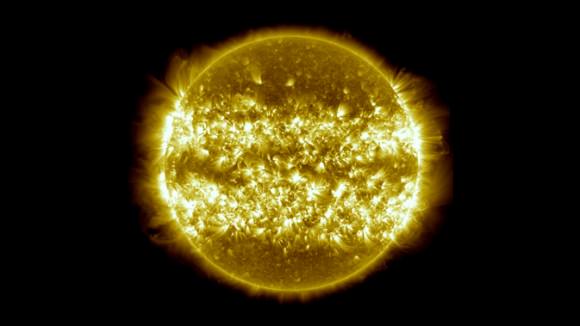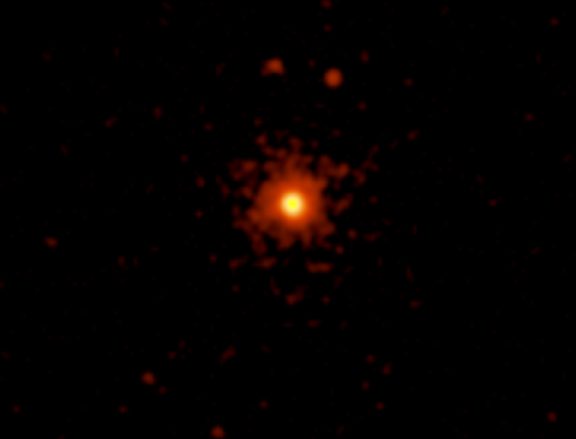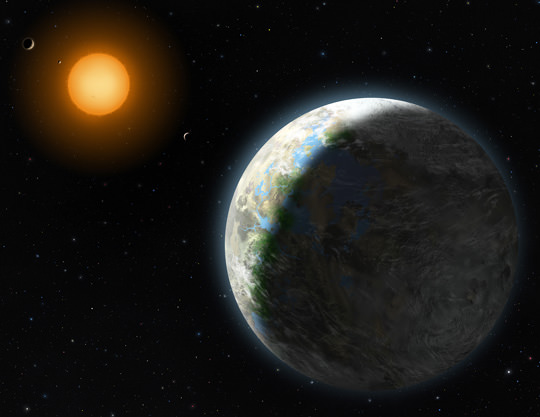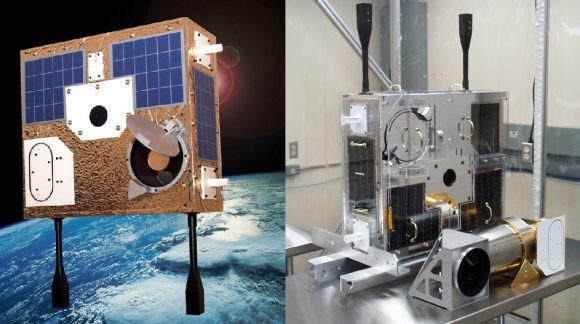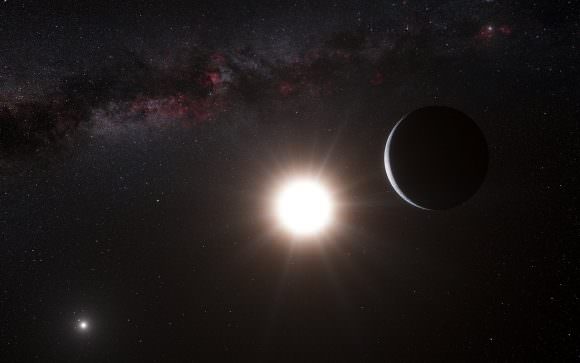The extra-solar planet known as Proxima b has occupied a special place in the public mind ever since its existence was announced in August of 2016. As the closest exoplanet to our Solar System, its discovery has raised questions about the possibility of exploring it in the not-too-distant future. And even more tantalizing are the questions relating to its potential habitability.
Despite numerous studies that have attempted to indicate whether the planet could be suitable for life as we know it, nothing definitive has been produced. Fortunately, a team of astrophysics from the University of Exeter – with the help of meteorology experts from the UK’s Met Office – have taken the first tentative steps towards determining if Proxima b has a habitable climate.
According to their study, which appeared recently in the journal Astronomy & Astrophysics, the team conducted a series of simulations using the state-of-the-art Met Office Unified Model (UM). This numerical model has been used for decades to study Earth’s atmosphere, with applications ranging from weather prediction to the effects of climate change.

With this model, the team simulated what the climate of Proxima b would be like if it had a similar atmospheric composition to Earth. They also conducted simulations on what the planet would be like it if had a much simpler atmosphere – one composed of nitrogen with trace amounts of carbon dioxide. Last, but not least, they made allowances for variations in the planet’s orbit.
For instance, given the planet’s distance from its sun – 0.05 AU (7.5 million km; 4.66 million mi) – there have been questions about the planet’s orbital characteristics. On the one hand, it could be tidally-locked, where one face is constantly facing towards Proxima Centauri. On the other, the planet could be in a 3:2 orbital resonance with its sun, where it rotates three times on its axis for every two orbits (much like Mercury experiences with our Sun).
In either case, this would result in one side of the planet being exposed to quite a bit of radiation. Given the nature of M-type red dwarf stars, which are highly variable and unstable compared to other types of stars, the sun-facing side would be periodically irradiated. Also, in both orbital scenarios, the planet would be subject to significant variations in temperature that would make it difficult for liquid water to exist.
For example, on a tidally-locked planet, the main atmospheric gases on the night-facing side would be likely to freeze, which would leave the daylight zone exposed and dry. And on a planet with a 3:2 orbital resonance, a single solar day would most likely last a very long time (a solar day on Mercury lasts 176 Earth days), causing one side to become too hot and dry the other side too cold and dry.

By taking all this into account, the team’s simulations allowed for some crucial comparisons with previous studies, but also allowed the team to reach beyond them. As Dr. Ian Boutle, an Honorary University Fellow at the University of Exeter and the lead author of the paper, explained in a University press release:
“Our research team looked at a number of different scenarios for the planet’s likely orbital configuration using a set of simulations. As well as examining how the climate would behave if the planet was ‘tidally-locked’ (where one day is the same length as one year), we also looked at how an orbit similar to Mercury, which rotates three times on its axis for every two orbits around the sun (a 3:2 resonance), would affect the environment.”
In the end, the results were quite favorable, as the team found that Proxima b would have a remarkably stable climate with either atmosphere and in either orbital configuration. Essentially, the UM software simulations showed that when both atmospheres and both the tidally-locked and 3:2 resonance configurations were accounted for, there would still be regions on the planet where water was able to exist in liquid form.
Naturally, the 3:2 resonance example resulted in more substantial areas of the planet falling within this temperature range. They also found that an eccentric orbit, where the distance between the planet and Proxima Centauri varied to a significant degree over the course of a single orbital period, would lead to a further increase in potential habitability.
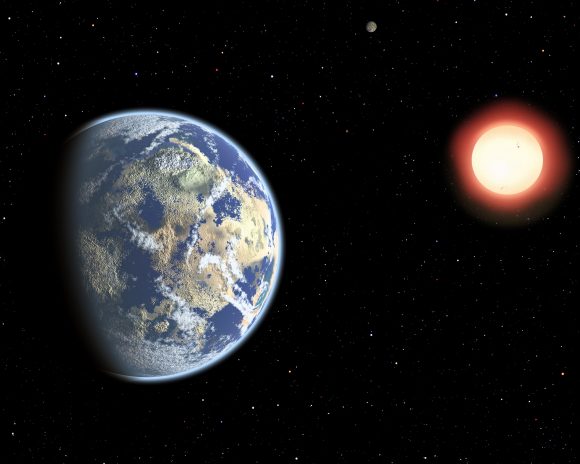
As Dr James Manners, another Honorary University Fellow and one of the co-authors on the paper, said:
“One of the main features that distinguishes this planet from Earth is that the light from its star is mostly in the near infra-red. These frequencies of light interact much more strongly with water vapor and carbon dioxide in the atmosphere which affects the climate that emerges in our model.”
Of course, much more work needs be done before we can truly understand whether this planet is capable of supporting life as we know it. Beyond feeding the hopes of those who would like to see it colonized someday, studies into Proxima b’s conditions are also of extreme importance in determining whether or not indigenous life exists there right now.
But in the meantime, studies such as this are extremely helpful when it comes to anticipating what kinds of environments we might find on distant planets. Dr Nathan Mayne – the scientific lead on exoplanet modelling at the University of Exeter and a co-author on the paper – also indicated that climate studies of this kind could have applications for scientists here at home.
“With the project we have at Exeter we are trying to not only understand the somewhat bewildering diversity of exoplanets being discovered, but also exploit this to hopefully improve our understanding of how our own climate has and will evolve,” he said. What’s more, it helps to illustrate how conditions here on Earth can be used to predict what may exist in extra-solar environments.
While that might sound a bit Earth-centric, it is entirely reasonable to assume that planets in other star systems are subject to processes and mechanics similar to what we’ve seen on the Solar planets. And this is something we are invariably forced to do when it comes to searching for habitable planets and life beyond our Solar System. Until we can go there directly, we will be forced to measure what we don’t know by what we do.
Further Reading: University of Exeter, Astronomy & Astrophysics




